
14K vs 18K Gold: Powerful Differences You Must Know
When choosing gold jewellery, the debate between 14K vs 18K Gold is a common one, and for good reason. Whether you’re buying a ring, bracelet, necklace or set, understanding what each karat means can help you make the best decision.
In this post, I’ll walk you through all the major differences and show you how you can elevate your jewellery game by considering pieces from KYMEE’s 18 K Gold Vermeil collection.
What do “14 K” and “18 K” mean?
When you see jewellery labelled “14K” or “18K”, the “K” stands for karat, which is a unit used to express the purity of gold in the piece. Pure gold is defined as 24 karats, so a piece labelled “18K” means 18 parts gold out of 24, that is 75 % gold, and the rest is made up of other metals (alloys). Conversely, “14K” is 14 parts gold out of 24, which equals roughly 58.3 % gold and 41.7 % alloy.
These alloys are added for practical reasons: pure gold (24K) is very soft and not ideal for most jewellery that has to endure daily use. By mixing in other metals like copper, silver, zinc or nickel, the final piece becomes more durable, more affordable and easier to craft.
So when you consider 14K vs 18K gold, you’re primarily comparing: how much pure gold is in the piece and how much alloy metal is in the piece. That difference influences colour, cost, durability and suitability for different types of jewellery.
Composition comparison: 14K vs 18K Gold
Here’s a more detailed breakdown:
- 14K gold: ~58.3% pure gold; ~41.7% alloy metals.
- 18K gold: ~75% pure gold; ~25% alloy metals.
Because 18K contains more pure gold, it tends to carry a higher intrinsic value, but that also means the jewellery will generally cost more. For example, one guide shows a 5-gram piece in 18K may cost 20-30% more than the 14K version because of the higher gold content.
The different alloying metals influence colour (for example, in rose gold or white gold) and hardness (durability). So the exact wear characteristics will depend on the specific mixture, not just the karat number.
Colour & appearance differences
One of the most noticeable differences between 14K and 18K gold jewellery is the colour:
- 18K gold has a richer, warmer yellow tone because of the higher pure gold content.
- 14K gold tends to appear slightly lighter, more muted in yellow gold styles, because the alloy metals dilute the pure gold colour.
If you hold a yellow gold 14K piece and an 18K piece side by side, the 18K will often reflect a deeper golden hue. That said, the difference can be subtle depending on lighting, design, and finish.
For white gold or rose gold, the visual differences may be less dramatic because plating and metal finish play a bigger role. Still, those pursuing the “classic gold glow” often lean toward 18K for its richer appearance.
Durability and wear-resistance
When it comes to durability, which jewellery wears better day to day, the story is interesting:
- Because 14K has more alloy metals (stronger metals mixed in), it is harder and tends to resist scratches, dings and wear better in frequent use.
- 18K, with more pure gold, is softer and more prone to showing wear and surface marks over time if used daily.
For example, one source states that the Mohs hardness for typical 14K gold may handle more force before denting than an 18K piece in everyday conditions.
What this means in practical terms:
- If you plan to wear a piece every day (like a wedding band, daily necklace, or bracelet), 14K may offer better longevity with less worry.
- If a piece is going to be worn occasionally or treated more as a luxury/statement item, 18K can be absolutely fine; you just may want to treat it with a bit more care.
Cost & investment value
There’s no escaping it: karat affects cost. Because 18K contains more pure gold than 14K, it is typically more expensive for the same weight and size.
Also, when it comes to investment value (in terms of raw metal), the higher gold content in 18K means there is more “gold value” locked in. However, jewellery value is not just about metal, design, brand, finishing, and craftsmanship; all matter.
In markets like India, for example, jewellery buyers often balance between gold content, design and cost. Higher karat means higher cost, but not always significantly higher durability or daily suitability, depending on use.
So: you’ll pay a premium for 18K versus 14K, but if the piece is well made, that premium could also translate into richer colour, higher status and better perceived luxury.
Hypoallergenic & skin-sensitivity aspects
If you have sensitive skin or are prone to metal allergies, the choice of karat matters:
- Because 18K has fewer alloy metals (by proportion) it can be less likely to cause skin reactions, since many skin issues are triggered by nickel, copper or other mixed metals.
- 14K, with a higher proportion of alloy metals, might have more of those potential irritants. That doesn’t guarantee a reaction; many 14K pieces are fine, but it is something to check (especially for white gold or mixed alloy jewellery).
If hypoallergenic performance is a priority (for earrings, studs, skin-contact pieces), then 18K might offer an edge.
Everyday jewellery vs special-occasion pieces
Choosing between 14K vs 18K often comes down to how you will use the piece:
- Everyday wear (daily necklace, ring you never take off, bracelet you sweep your hand across the desk): durability, scratch-resistance and value matter → 14K often wins.
- Special or selective wear (evening jewellery, pieces you rotate, occasion rings): richer look, luxury feel, deeper colour matters → 18K often preferred.
- Also, the size and type of jewellery: a delicate pendant might suffer less wear and therefore 18K is perfectly fine; a thick, heavy ring subject to knocks may be better in 14K.
This is supported by jewellery guides noting that 14K is more resilient for “rings and bracelets that take knocks and scrapes”. Meanwhile, 18K is described as “better for special-occasion pieces or items receiving gentler handling”.
Therefore, match karat to lifestyle. If you’re active, hands-on, or rough-on jewellery: lean 14K. If you treat jewellery gently, value luxury, and the piece is less about daily rugged use, 18K is a strong choice.
How to choose between 14K and 18K for you
Here’s a handy checklist to help you decide:
- Budget: If you have a strict budget, 14K often gives you more “gold value” for less cost.
- Frequency & environment of wear: Will you wear it every day, in active situations or occasionally?
- Style & appearance you want: Do you prefer the rich, warm tone of 18K, or is the lighter look of 14K fine?
- Skin sensitivity: If you’ve had reactions to jewellery, lean towards 18K or check for hypoallergenic alloy.
- Maintenance willingness: Higher karat (18K) might show wear more quickly and require a bit more care.
- Resale/investment minded: If you view it as an investment or heirloom, higher gold content (18K) may feel more “premium”.
- Design & weight of piece: Big, heavy items might cost a lot more in 18K; delicate items are less impacted.
Why choose KYMEE’s 18K Gold Vermeil?
- The collection uses 18K gold vermeil, which means a base of sterling silver (925) with a thick layer of 18K gold plating, combining the richness of 18K with more accessible pricing.
- For women who love the look of deep gold but want something accessible and stylish for modern wear, these pieces check the box.
- KYMEE clearly emphasises 18K gold vermeil as a featured category, showing the brand’s focus on quality, luxury appearance, and approachable price-point.
- Whether you want statement rings or everyday studs, the brand balances rich gold tone with versatile designs, meaning you don’t have to compromise between style and substance.
How this relates to our 14K vs 18K discussion:
Since 18K gold has a richer tone and higher pure gold content, opting for 18K vermeil gives you that luxe look. If durability or heavy daily wear were the only concerns, you might choose 14K solid gold, but for many women seeking premium style with an accessible budget, a brand like KYMEE’s 18K vermeil collection becomes an excellent choice. You get the visual prestige of 18K, without paying full fine jewellery gold rates. It’s a smart bridge.
So if you’re leaning toward “I want richer gold, high style, versatile for day-to-night”, definitely explore KYMEE’s 18K gold vermeil jewellery.
Care & maintenance tips for both karats
Regardless of whether you pick 14K, 18K, or 18K vermeil, proper care helps your jewellery stay beautiful:
- Clean gently: use mild dish soap and warm water, soak 10-20 minutes, brush softly with a soft toothbrush, rinse, then pat dry.
- Store separately: to avoid scratches, store gold pieces individually in fabric-lined pouches or boxes.
- Remove for strenuous activity: When doing manual labour, sports, or cleaning, remove delicate pieces (especially higher karat/silver-based) to minimise scratches.
- Watch plating (for vermeil/white gold): For gold vermeil or white gold pieces, the plating may wear over time and might require re-plating or polishing, especially for pieces worn daily.
- Annual check: If settings hold stones, prongs, or links wear out, check prost-wear every 6-12 months, especially for higher karat pieces that are softer.
- Avoid harsh chemicals: Chlorine, strong detergents, salt water, and acidic solutions can dull or damage gold alloys and plating.
If you buy a piece like one from KYMEE’s 18K gold vermeil range, following these care tips will extend life and maintain the rich tone that 18K offers.
Conclusion
In the choice of 14K vs 18K Gold, there’s no one-size-fits-all answer. It’s about matching your lifestyle, budget, aesthetic and care habits. If you want something that can withstand daily life and active wear, 14K is a strong option. If you prefer lavish colour, premium feel and are willing to treat the piece with a bit more care, 18K (or 18K gold vermeil) might be your winning choice.
For women looking to blend luxury, style and everyday versatility, brands like KYMEE’s 18K gold vermeil collection offer a brilliant sweet spot, the rich tone of 18K, paired with modern design and accessible value.
So, as you pick your next jewellery piece, ask: “How will I wear it? How often? What look do I want? How much care am I willing to give?” With those answers in hand, your choice between 14K, 18K or a fine 18K gold vermeil piece becomes that much clearer..
FAQs
1. Is 18K gold better than 14K gold?
It depends. 18K gold has higher pure gold content and richer colour, but is softer and costlier. 14K gold is more durable and budget-friendly. Neither is universally “better”, it comes down to your needs.
2. Will 14K or 18K gold scratch more easily?
18K is more prone to scratches because it's softer (more pure gold). 14K tends to hold up better under heavy daily wear.
3. Can people with sensitive skin wear 14K gold?
Yes, but because 14K has more alloy metals (which may include irritants like nickel), those with known sensitivities might prefer 18K or ensure their 14K piece is hypoallergenic.
4. Does the difference in colour between 14K and 18K matter?
Yes, visually, 18K often looks a deeper, more luminous gold. If the rich yellow tone is important to you, 18K has an edge.
5. Is 18K gold jewellery worth the extra cost?
If you value high purity, richer colour and plan to use it as an occasional or luxury piece, yes, it can be worth it. If you need something rugged for everyday heavy wear, 14K might give better value.
6. What’s “gold vermeil”, and how does it relate to 18K gold?
“Vermeil” means a sterling silver base (925) that is coated with a thick layer of gold. So when you see “18K gold vermeil”, it means the coating is 18K gold. This allows you to enjoy the look of 18K gold while reducing cost. For example, KYMEE offers 18K gold vermeil jewellery.
7. Can you wear 14K gold every day?
Yes, it’s very durable and great for daily wear.
8. Can you wear 18K gold every day?
Yes, but it’s slightly softer than 14K, so handle it with care.
9. Will 14K or 18K gold tarnish faster?
14K may tarnish a little faster because it has more alloys, but both resist tarnish well.









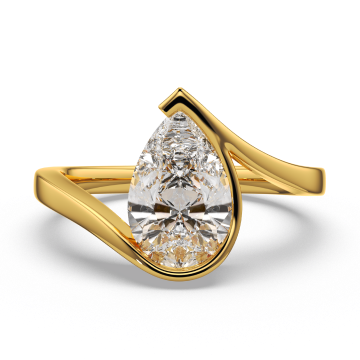
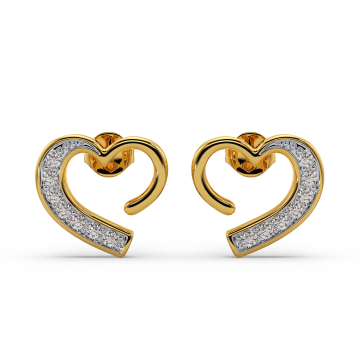
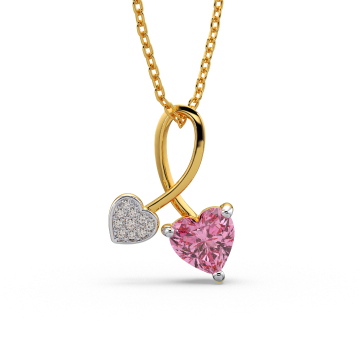
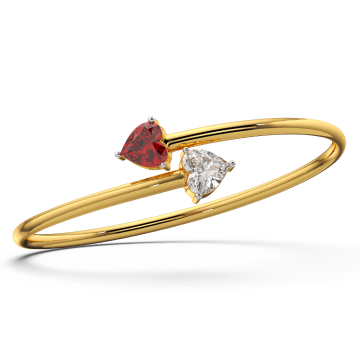
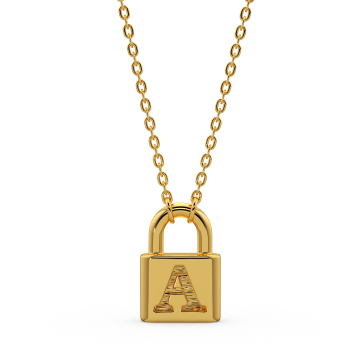
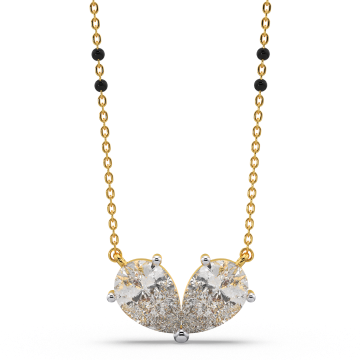
 All Rings
All Rings Toi Et Moi Rings
Toi Et Moi Rings Wedding Bands
Wedding Bands Solitaire Rings
Solitaire Rings Stackable Rings
Stackable Rings Dainty Rings
Dainty Rings Personalized Rings
Personalized Rings Daily Wear Rings
Daily Wear Rings Halo Rings
Halo Rings Ring Set
Ring Set For Daily Wear
For Daily Wear For Party
For Party For Work
For Work For Gifting
For Gifting For College
For College For Festive Days
For Festive Days All Earrings
All Earrings Hoop Earrings
Hoop Earrings Drop Earrings
Drop Earrings Stud Earrings
Stud Earrings Name Earrings
Name Earrings Threader Earrings
Threader Earrings All Necklaces
All Necklaces Charm Pendants
Charm Pendants Pendant & Necklaces
Pendant & Necklaces Station Necklaces
Station Necklaces Personalized Necklaces
Personalized Necklaces Layered Necklaces
Layered Necklaces Drop Necklaces
Drop Necklaces All Bracelets
All Bracelets Name Bracelets
Name Bracelets Chain Link Bracelets
Chain Link Bracelets Bangle Bracelets
Bangle Bracelets Charm Bracelets
Charm Bracelets Tennis Bracelets
Tennis Bracelets